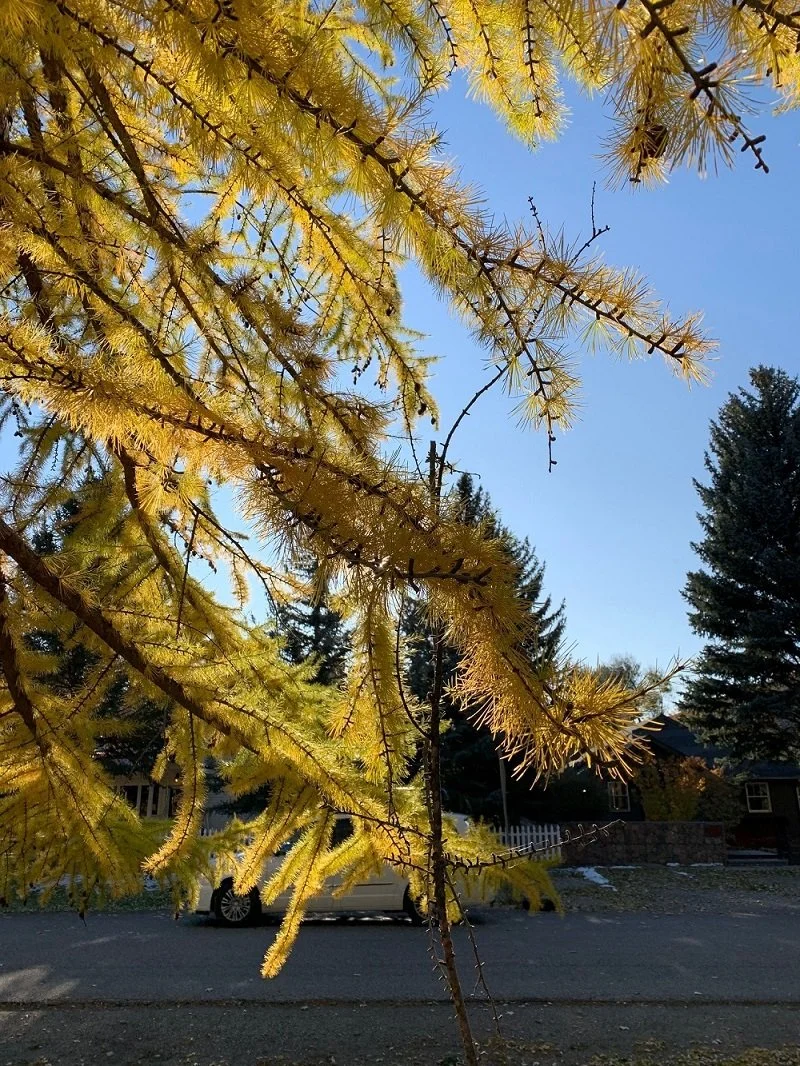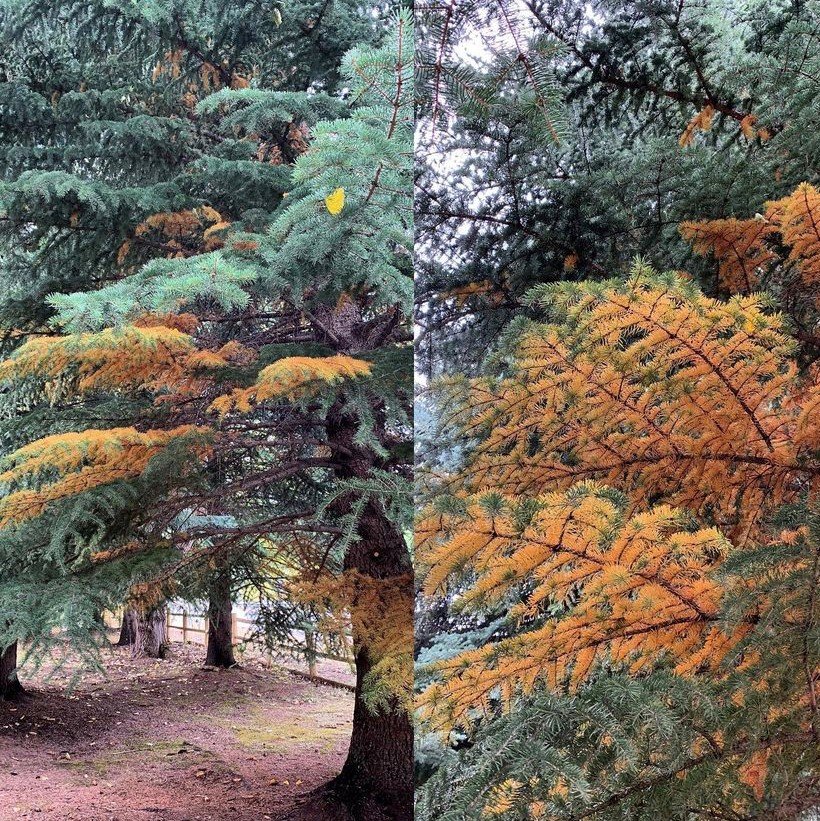Fall Needle Drop: What’s Normal and What’s Not?
Conifers are highly valued trees that are aesthetically pleasing and add color to the landscape year-round. Every fall our phones ring with calls from concerned customers panicking when they see the needles of their evergreens turn yellow, brown, or reddish in color.
Most don’t realize that evergreens must drop their old needles at some point just like deciduous trees lose their leaves.
It’s a common misconception that because trees are considered to be "evergreen" that their needles will live forever. Environmental conditions, diseases, and insects in conjunction with genetics determine the age when needles are shed.
Often, the natural shedding of needles is not noticed because new needles are also produced every year. There is constant rotation between new growth needles and needles that are due to fall. Some evergreens shed their needles a few at a time, while others have a more substantial seasonal shedding. Pines can hold their needles for 2-5 years, while Spruce trees generally hold onto their needles for 5-7 years. Most concerns arise in years when needle drop occurs in a relatively short period of time, with rapid and noticeable browning of the older needles. In other years, people don't even notice it happening, because the browning is spread over a longer period of time.
Natural needle loss located in the interior or bottom of the tree is rarely a cause for concern. It occurs in areas where the tree has become too dense or shaded by other plants or structures. This is a natural response triggered by the lack of sunlight penetrating the interior of the canopy. If the tree can no longer use the needle during photosynthesis to produce energy, the tree efficiently responds by shedding them. Keep in mind that evergreens do not replace the needles that drop and therefore this area of the tree will remain bare. In spring, new growth will occur at the terminal ends of branches.
Natural fall needle drop may be more noticeable on trees that have experienced stress due to adverse growing conditions. Such factors include; weather, climate, transplant shock, herbicide injury, pre-existing root damage, drought, and poorly drained or over-irrigated sites with heavy clay soils. Needle loss by evergreens will vary from year to year and between species due to inherent genetic differences and reactionary responses to site conditions. The challenge for tree owners and managers is to observe these differences over time in order to identify what is typical and what is not.
Needle loss that is abnormal is characterized by yellowing or dieback of new growth at the tips of branches or the exterior of the plant. Simply put, if the bulk of discoloration occurs near the buds, a more detailed assessment is warranted. It’s a good idea to have an inspection done by an ISA Certified Arborist of any suspect foliage to eliminate the possibility of disease, insects, or other potential pest problems. Other possible causes include winter injury (salt spray, desiccation), animals (feeding, urine), and even exhaust from vehicles/machines.
Surprisingly, there are actually a few types of conifers that shed all their needles annually. These deciduous conifers include larch, bald cypress and dawn redwood. Such trees are unusual enough that many have been mistakenly removed during dormancy because they were thought to be dead… Oops!!


